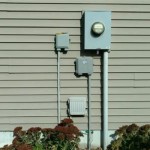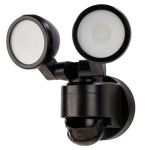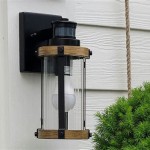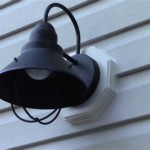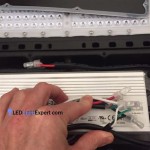Best Light For Outdoors: Illuminating Your Outdoor Spaces Effectively
Selecting the appropriate lighting for outdoor spaces is a critical aspect of landscape design, home security, and overall property value. Effective outdoor lighting enhances aesthetics, improves safety by illuminating pathways and potential hazards, and can deter criminal activity. The optimal choice for outdoor lighting depends on several factors, including the intended purpose, the size of the area to be illuminated, energy efficiency considerations, and aesthetic preferences. This article explores the key considerations for determining the best light for various outdoor applications.
Understanding Lumens, Color Temperature, and Light Distribution
Before delving into specific lighting solutions, it is essential to grasp several fundamental concepts related to light. Lumens measure the total amount of visible light emitted by a source; a higher lumen count indicates a brighter light. The required lumen output varies depending on the intended use. For example, pathway lighting generally requires fewer lumens than security floodlights. Color temperature, measured in Kelvin (K), describes the perceived warmth or coolness of the light. Lower Kelvin values (e.g., 2700K) produce a warm, yellowish light, while higher Kelvin values (e.g., 5000K) create a cool, bluish-white light. Light distribution refers to how the light is spread across an area and is influenced by the fixture's design and reflector. Understanding these concepts is paramount to selecting the most suitable outdoor lighting.
Several types of light sources are commonly used in outdoor lighting applications. Incandescent bulbs, once prevalent, are now less common due to their low energy efficiency and short lifespan. Halogen bulbs offer slightly improved efficiency compared to incandescent bulbs, but they still consume a significant amount of energy. Compact fluorescent lamps (CFLs) are more energy-efficient than incandescent and halogen bulbs, but they contain mercury and require careful disposal. Light-emitting diodes (LEDs) have emerged as the dominant technology for outdoor lighting due to their superior energy efficiency, long lifespan, and durability. LEDs are also available in a wide range of color temperatures and lumen outputs.
Another factor to consider is the fixture itself. Outdoor lighting fixtures are available in various styles, including spotlights, floodlights, pathway lights, wall-mounted lights, and landscape lights. The choice of fixture should align with the intended purpose and aesthetic of the outdoor space. The fixture’s material is also crucial. Look for materials like aluminum, stainless steel, or durable plastics that can withstand the elements. Furthermore, consider the fixture's ingress protection (IP) rating, which indicates its resistance to dust and water. A higher IP rating indicates better protection against environmental factors.
Key Applications and Lighting Recommendations
Different outdoor spaces require different lighting solutions. Pathways and walkways require illumination that is adequate to guide pedestrians safely without being excessively bright. Path lights, often spaced several feet apart, provide low-level lighting that highlights the path's edges. These lights should have a low lumen output and a warm color temperature to create a welcoming ambiance. Alternatively, recessed lighting can be used to illuminate pathways, providing a sleek and unobtrusive look. Low-voltage landscape lighting is also a viable option for pathways, enabling flexible installation and lower operating costs.
Patios and decks typically require lighting to create a comfortable and inviting atmosphere for outdoor entertaining. String lights, often featuring LED bulbs, can add a festive touch. Wall-mounted sconces provide ambient lighting and can enhance the architectural features of the house. Recessed lighting in the deck surface can offer subtle illumination. Consider dimmer switches to adjust the brightness according to the occasion. Avoid overly bright lights that can create glare and detract from the ambiance. A warm color temperature is generally preferred for patios and decks to create a relaxing environment.
For security purposes, floodlights are commonly used to illuminate large areas such as driveways, backyards, and building perimeters. Floodlights should have a high lumen output and a wide beam angle to provide comprehensive coverage. Motion sensors can be integrated into floodlights to activate the lights only when movement is detected, conserving energy and deterring potential intruders. Choose floodlights with a cool color temperature for optimal visibility. Consider the placement of floodlights to minimize light pollution and avoid disturbing neighbors. It is also important to ensure that floodlights do not create harsh shadows or blind spots.
Landscape lighting enhances the aesthetic appeal of a property by highlighting trees, shrubs, and other landscape features. Uplighting, where lights are placed at the base of a tree or shrub and directed upwards, can create a dramatic effect. Downlighting, where lights are mounted high up and directed downwards, mimics natural moonlight. Spotlights can be used to highlight specific landscape elements. Use low-voltage landscape lights for flexibility and energy efficiency. Consider the color temperature of the landscape lighting to complement the colors of the plants and foliage. Avoid over-lighting the landscape, as this can create an artificial and unnatural appearance.
Energy Efficiency and Smart Lighting Options
Energy efficiency is a significant consideration for outdoor lighting. LED lights are the most energy-efficient option, consuming up to 80% less energy than incandescent bulbs. Look for Energy Star-certified fixtures, which meet stringent energy efficiency standards. Consider using solar-powered lights, which are self-sufficient and require no wiring. Solar lights are particularly well-suited for pathways and landscape lighting. Ensure that solar lights are placed in areas that receive ample sunlight throughout the day. Battery life and charging efficiency are important factors to consider when selecting solar-powered lights.
Smart lighting systems offer advanced control and automation features that can enhance energy efficiency and convenience. Smart lights can be controlled remotely via a smartphone or tablet. These systems often allow users to schedule lighting schedules, adjust brightness levels, and even change color temperatures. Motion sensors and timers can be integrated into smart lighting systems to further optimize energy usage. Some smart lighting systems can also be integrated with other smart home devices, such as security cameras and doorbells. The initial investment in a smart lighting system may be higher, but the long-term energy savings and convenience can be significant.
Another consideration is minimizing light pollution. Light pollution refers to excessive or misdirected artificial light that interferes with astronomical observations, disrupts ecosystems, and wastes energy. Use shielded fixtures that direct light downwards, preventing light from escaping upwards or sideways. Avoid over-lighting outdoor spaces. Use timers or motion sensors to turn off lights when they are not needed. Choose bulbs with a lower lumen output for areas that do not require bright illumination. Consider using amber or red-colored lights, which are less disruptive to wildlife. Collaborate with neighbors to coordinate outdoor lighting strategies and minimize light trespass.
Maintenance is an important aspect of outdoor lighting. Regularly inspect fixtures for damage or corrosion. Clean lenses and reflectors to maintain optimal light output. Replace bulbs as needed. Check wiring and connections to ensure they are secure. Consider hiring a professional electrician to perform regular maintenance and repairs. Proper maintenance can extend the lifespan of outdoor lighting fixtures and ensure they operate safely and efficiently.
When choosing outdoor lighting, consider the local regulations and building codes. Some municipalities have specific requirements regarding the type of lighting that can be used, the maximum lumen output, and the direction of the light. Be aware of any restrictions on light pollution and light trespass. Obtain any necessary permits before installing outdoor lighting fixtures. Consult with a qualified electrician or lighting designer to ensure compliance with local regulations and building codes.

The 3 Best Smart Outdoor Lights For Backyards Of 2024 Reviews By Wirecutter

Best Outdoor Lighting Bulbs Of 2024

Choose The Best Color Temperature For Your Outdoor Lighting Knowledge Base Super Bright Leds

10 Best Outdoor Lighting Ideas Landscape Design Secrets A Piece Of Rainbow

What Type Of Light Is Best For Outdoors Powersource Electric

5 Best Outdoor Solar Lights Of 2024 Reviewed

10 Best Outdoor Lighting Ideas Landscape Design Secrets A Piece Of Rainbow

What Is The Best Led Color Temperature For Outdoor Lighting

Best Color Temperature For Outdoor Lighting Enhanced

The 3 Best Smart Outdoor Lights For Backyards Of 2024 Reviews By Wirecutter
Related Posts
